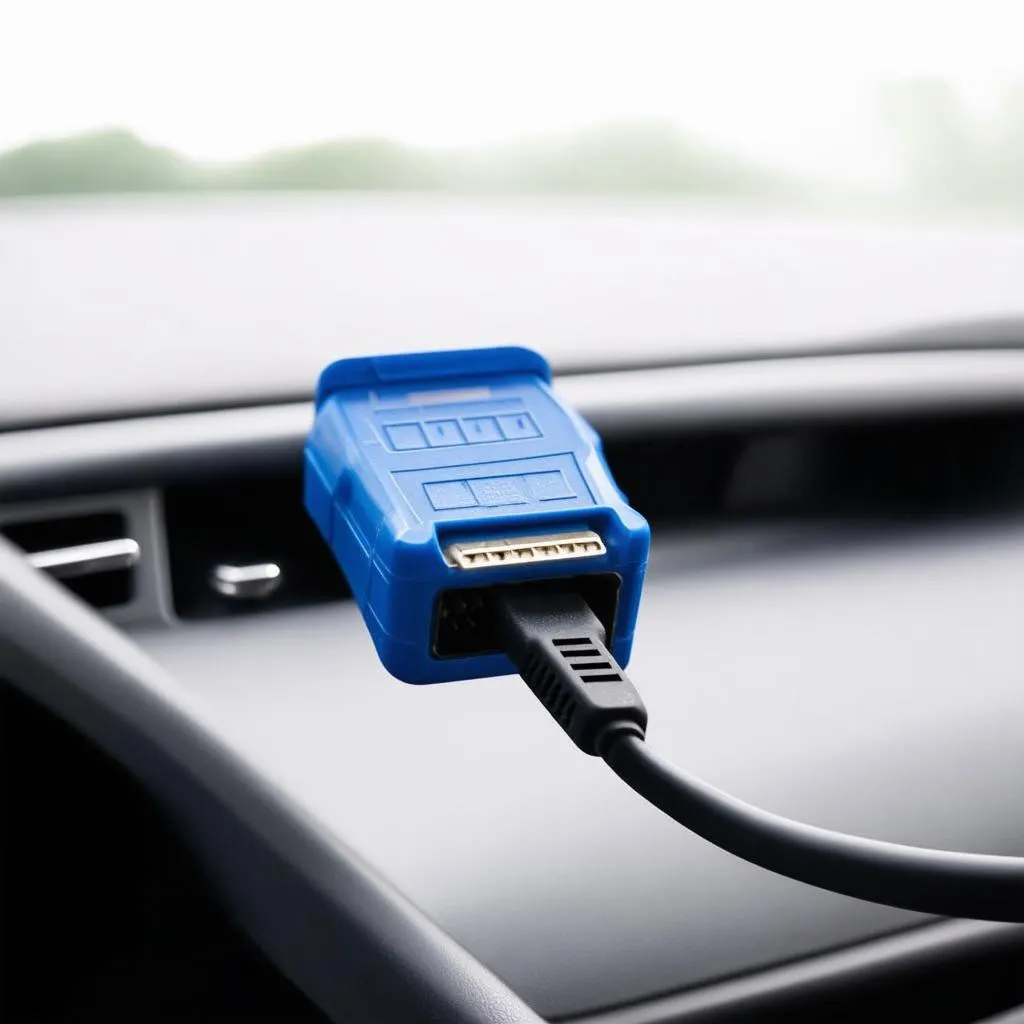Ever felt like your car is talking to you in a language you don’t understand? That’s what it feels like when you see those cryptic OBD codes flashing on your dashboard. You might be wondering, “Do I need to clear these codes to reset my car?” Well, let’s dive into the fascinating world of OBD codes and find out!
What Are OBD Codes?
OBD codes, short for On-Board Diagnostics, are like a car’s secret language. They’re basically error messages that your car’s computer uses to communicate with you about potential problems. Imagine a small, sophisticated detective inside your car, always monitoring everything and sending you signals when something isn’t right. These codes can tell you everything from a faulty oxygen sensor to a low tire pressure.
Do I Have to Clear OBD Codes?
The simple answer is: It depends! It depends on what the code is, what kind of car you drive, and what you’re trying to accomplish. Here’s the thing:
Understanding the OBD Code
Not all OBD codes are created equal. Some codes are serious and require immediate attention, while others are simply informational. Let’s break it down:
- Diagnostic Trouble Codes (DTCs): These are the most common type of OBD codes and usually indicate a problem that needs fixing. If you see a DTC, it’s generally a good idea to consult a mechanic to figure out what the code means and get the issue addressed.
- Pending Codes: These codes haven’t reached the threshold to trigger a warning light but might indicate a potential problem that’s developing.
- Historical Codes: These are old codes that your car remembers from previous problems. They won’t necessarily impact your current driving experience, but they can be helpful for diagnosing any recurring issues.
Car Model and OBD System
The type of car you drive can also influence the importance of clearing codes. Some modern cars have sophisticated OBD systems that can automatically clear codes when the issue has been resolved. Others might require you to manually clear them.
The Purpose of Resetting
Why would you want to reset your car’s computer? Maybe you’ve just fixed a problem, and you want to see if the code clears. Or perhaps you’re preparing to sell your car and want to erase any potential red flags.
When to Clear OBD Codes
Here are some scenarios where clearing OBD codes might be a good idea:
- After a Repair: If you’ve fixed a problem that was generating a code, clearing the code can help confirm that the issue has been resolved.
- Preparing to Sell: Clearing codes can help give potential buyers a clean slate and a sense of confidence in the car’s history.
- Performance Tuning: Some performance tuning tools and modifications might require clearing codes to reset the ECU (Engine Control Unit).
- For Diagnostic Purposes: Clearing codes can sometimes be helpful in isolating specific problems during diagnostics.
The Risks of Clearing OBD Codes
While clearing codes can sometimes be beneficial, there are a few risks to consider:
- Ignoring Underlying Issues: Clearing codes without addressing the underlying problem can lead to the same issue reappearing later.
- Potentially Masking a Serious Problem: While clearing codes doesn’t necessarily cause a serious problem, it could make it harder to diagnose a problem that’s lurking under the surface.
Clearing Codes: The DIY Approach vs. Professional Help
You can find plenty of tools and apps available to clear codes yourself. However, if you’re not comfortable with automotive diagnostics, it’s always best to consult a professional mechanic. They can help you understand the code, determine if it needs to be cleared, and ensure any necessary repairs are performed.
How to Clear OBD Codes
If you’re feeling adventurous and want to try clearing codes yourself, here’s a basic rundown:
- Get a Code Reader: Purchase an OBD2 code reader. Many affordable options are available online and at auto parts stores.
- Connect the Reader: Plug the code reader into your car’s OBD2 port, typically found under the dashboard or near the steering column.
- Read the Codes: The reader will display the codes stored in your car’s computer.
- Clear the Codes: Most readers have a “clear” or “erase” option that you can use to reset the codes.
- Test Drive: Take your car for a test drive to see if the code returns.
Tips for Understanding OBD Codes
- Use a Code Reader with a Database: Look for a code reader that includes a database of common OBD codes and their explanations. This can help you decipher the meaning of the codes you’re seeing.
- Consider a Professional Diagnosis: If you’re unsure about what a code means or how to proceed, don’t hesitate to consult a professional mechanic. They can offer a comprehensive diagnosis and recommend the best course of action.
- Keep Records: Keep a record of the codes you encounter and the steps you take to address them. This can help you track any recurring issues or pinpoint patterns in your car’s behavior.
Frequently Asked Questions (FAQs)
1. Can I clear codes without fixing the problem?
Yes, you can clear codes without fixing the underlying issue. However, this is not recommended, as it might mask a serious problem and prevent you from addressing it promptly.
2. How long does it take to clear OBD codes?
Clearing OBD codes usually takes only a few minutes using a code reader.
3. Will clearing codes affect my car’s performance?
In most cases, clearing codes should not affect your car’s performance. However, if the code was related to a critical system, you might notice a difference in your car’s driving behavior until the problem is addressed.
4. Does clearing codes reset the ECU?
Clearing codes does not necessarily reset the ECU. Some modern cars have automatic reset functions, while others require manual resetting using a specialized tool.
5. What if I can’t clear the OBD codes?
If you’re unable to clear the OBD codes yourself, consult a professional mechanic. They might have specialized tools or access to additional diagnostics that can help identify and address the underlying problem.
OBD Code Clearing: A Balancing Act
Think of OBD code clearing as a balancing act. While clearing codes can provide a quick fix or temporary relief, it’s crucial to remember that they are symptoms of a deeper issue. Address the root cause of the problem for a long-term solution, and keep your car running smoothly.
 obd code reader
obd code reader
 mechanic diagnosing
mechanic diagnosing
Connect with TechCarUSA
Need expert advice on OBD codes, diagnostics tools, or any other car-related issues? Our team of experienced automotive professionals is here to help! Reach out to us via Whatsapp at +84767531508, and we’ll be happy to answer your questions and provide personalized support 24/7.
Explore More
For more information on specific topics related to OBD codes, check out these related articles on TechCarUSA:
- Bosch OBD 150 Review
- How Many OBD Codes on a 2003 Dodge Grand Caravan?
- How to Erase Permanent OBD Codes
- How to Use OBD-II for a 2022 Toyota Corolla LE
- Does OBD Changes Reset?
Don’t hesitate to leave a comment below or share this article with your fellow car enthusiasts. Let’s keep the conversation rolling!